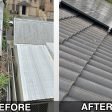Modern power distribution systems demand both efficiency and reliability. As electricity usage increases in residential, commercial, and industrial sectors, the components responsible for carrying current must meet high standards. One of the most trusted solutions for managing electrical loads is the copper busbar. Engineered for high conductivity and long-term stability, copper busbars are widely used in electrical panels, switchgear, and infrastructure systems around the globe.
What Is a Copper Busbar?
A copper busbar is a flat or shaped bar made from high-conductivity copper, used to conduct electricity in power distribution systems. Typically installed within electrical enclosures, panels, or substations, these bars serve as centralized points where power enters and exits. Their main job is to distribute electric current efficiently while reducing losses, heat, and maintenance issues.
Busbars are favored over cables in many modern systems due to their rigid structure, easier installation, and superior performance in confined spaces. They can be bare, tinned, or insulated depending on the application and environment.
Why Copper is the Ideal Material for Busbars
Copper is the preferred material for busbars due to its outstanding combination of properties. Here’s what makes it stand out:
1. High Electrical Conductivity
Copper ranks as one of the best conductors of electricity. This allows for minimal energy loss as current flows, even over long distances. With a copper busbar, your system experiences better voltage regulation and fewer hotspots.
2. Thermal Conductivity
Good thermal performance is essential in power systems. Copper dissipates heat quickly, allowing the busbar to carry higher currents without overheating. This helps protect sensitive equipment and extends system life.
3. Mechanical Strength
Copper busbars are structurally strong and resistant to deformation. They can support heavy terminal connections and endure mechanical stresses during maintenance or installation, unlike many cable-based systems.
4. Corrosion Resistance
In many environments, especially those with high humidity or industrial pollution, corrosion can degrade electrical components. Tinned or coated copper busbars resist oxidation and chemical attacks, making them suitable for demanding settings.
Where Copper Busbars Are Used
The application of copper busbars spans across sectors. Here are just a few key examples:
- Power Plants & Substations: Used for high-current transmission and efficient load distribution.
- Factories & Industrial Units: Ideal for machine panels, motor control centers, and backup power systems.
- Buildings & Commercial Spaces: Help distribute power in centralized control panels or risers.
- Solar Power Installations: Serve as efficient conductors for DC and AC connections.
- Railways & Electric Vehicles: Used in battery packs and power supply systems due to high vibration resistance.
Types of Copper Busbars
Not all copper busbars are the same. Their design depends on the intended use:
- Solid Rectangular Busbars: Common in control panels for fixed installations.
- Flexible Laminated Busbars: Made of thin copper strips stacked together, offering flexibility and vibration resistance.
- Braided Busbars: Used where movement, expansion, or vibration is expected.
- Insulated Busbars: Coated with PVC, heat-shrink, or epoxy for added electrical safety.
Each type offers specific advantages depending on the system design and environmental conditions.
Benefits Over Traditional Cables
Cables have long been used for electrical distribution, but copper busbars offer several compelling advantages:
- Lower Power Losses: Less resistance means more efficient energy transfer.
- Simpler Installation: No need for cable lugs or terminations, reducing labor time.
- Better Heat Dissipation: Flat surface area radiates heat more effectively than cables.
- Higher Load Capacity: Busbars can carry more current in a smaller footprint.
- Neater System Layout: Helps organize electrical panels more cleanly, which improves safety and troubleshooting.
Considerations Before Installing a Copper Busbar
If you’re planning to install a copper busbar, keep the following in mind:
- Load Requirements: Choose a busbar rated for your maximum expected current.
- Environmental Conditions: In humid or corrosive environments, opt for coated or tinned copper.
- Space Constraints: Ensure there’s enough clearance in your panel for proper heat dissipation.
- Short-Circuit Protection: Make sure the busbar design complies with electrical safety standards.
Partnering with a reliable manufacturer or installer can help you size and specify the right product for your application.
Maintenance and Lifespan
One of the major benefits of using copper busbars is their low maintenance. Still, periodic inspections can extend lifespan and prevent failures:
- Check for Loose Connections: Vibration can cause terminals to loosen over time.
- Inspect for Discoloration or Overheating: These may be signs of overload or poor contact.
- Clean Dust and Debris: Especially important in outdoor or industrial environments.
- Use Infrared Scanning: Detect potential hot spots before they become hazards.
With proper care, a copper busbar system can last decades without needing replacement.
Final Thoughts
When it comes to efficient, safe, and long-lasting power distribution, the copper busbar is hard to beat. Its excellent conductivity, structural strength, and thermal properties make it the perfect solution for modern electrical systems. From solar farms to skyscrapers, copper busbars help keep the lights on—quietly and reliably.
Choosing the right copper busbar can elevate your system’s performance, reduce energy waste, and cut long-term costs. If you’re upgrading your power distribution or building from scratch, now is the time to consider copper busbars as your go-to solution.






